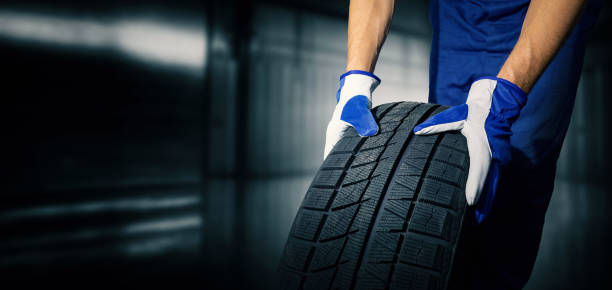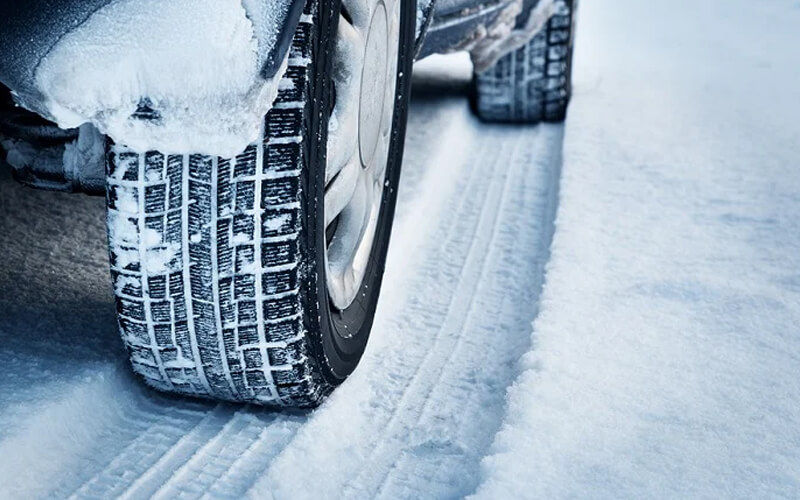When do you need new tyres for your vehicle?
- readingarage
- Apr 3
- 4 min read

Tyres have various crucial roles to play. They keep a vehicle stable and they carry its load as well. Moreover, role of tyres is also considerable with the role of brake system to stop a vehicle. Additionally, tyres provide proper grip and traction on dry, wet and snowy roads.
While playing these important roles, Tyres bear a lot of unfavorable driving conditions. As a result, they become old and worn after a certain time. You should change your tyres when this time arrives because your old tyres would not be able to serve you anymore. They are weak and inefficient to face unfavorable conditions.
After your tyres reach their retirement time, you need new tyres because they will be able to cope with harsh conditions.
If you make your decision wisely and buy tyres Reading, you will reap the following benefits:
Enhanced performance:
A lot of things determine the performance level of car tyres. For example stability at a high speed is a common performance factor. New tyres are very efficient to keep your vehicle stable at high speeds. Moreover, high-performance tyres will save fuel for your car as another example of performance and efficiency. You can expect all these performance features in your new tyres. Gradually, tyres lose their efficiency over time to reach near their retirement.
Safety concerns:
New tyres come with proper tread depth. Therefore, they provide excellent grip and traction on roads. Moreover, new tyres provide proper braking distance and stability to keep drivers and passengers safe on both wet and dry roads. Old tyres are obviously unsafe because of their decrease tread depth and other issues like cracks and bulges.
Optimum fuel efficiency:
Old tyres would not provide proper fuel efficiency. Your car engine has to work harder due to the issues, such as tread wear, cracks, and bulges. As a result, your vehicle will consume extra fuel to cover short distances.
New tyres are free of mechanical issues. Therefore, they do not increase pressure on car tyres. As a result, your vehicle runs on the road surface with optimum fuel efficiency.
Better gripping power:
Gripping performance of car tyres on different road surfaces depends on their tread depth and rubber material. Since new tyres come with optimum tread depth, they provide better traction on dry and wet roads. On the other hand, old tyres lose their strength to hold the road surface.
Driving experience:
For some car drivers, driving comfort can be the most common factor to examine performance and efficiency of car tyres. You have driven your car with your new tyres for several years. Now, you drive the vehicle with the same but old tyres. So, you can easily determine the difference on the basis of your feelings. Undoubtedly, drivers feel better with new tyres.
These benefits are enough to make it clear that new tyres are better than old tyres. It does not mean you should change your tyres even if they are not creating any issues. Old tyres cannot be as efficient as your new tyres are on the roads. You should change your old tyres after they become highly risky.
Old and damaged may cause the following risk factors:
Unusual sounds:
Hearing abnormal sounds while driving the car is the most common warning sign. Generally, drivers are familiar with usual sounds but you should be aware of the sounds that you never heard.
Sounds coming from tyres may occur due to tread wear in car tyres. Moreover, alignment issues in tyres may cause unusual sounds as well.
Vibrations:
Vibrations may occur due to alignment issues. Whenever you observe vibrations coming from car tyres, you should fix a meeting with your mechanic. The mechanic will check your tyres for wheel alignment issues.
Tread wear:
Signs of even or uneven tread wear also indicate that you should change your tyres. Uneven tread wear occurs in tyres due to several reasons, such as wheel alignment issues, wrong air pressure etc. Moreover, tyres wear out due to heat, friction, overloading, over-speeding and rough road surfaces.
Bulging or cracking tyres:
Observing bulges or cracks on the sidewalls should be a clear warning sign for car drivers. Bulged areas are risky because they cannot hold the air pressure. In this condition, increasing air pressure in tyres can be a disastrous experience. Moreover, high speed, heat, friction and road surfaces also create favorable conditions for blowouts if your tyres have one or multiple bulges on their sidewalls.
Cracks on the sidewall indicate negative changes in the rubber material. Large cracks are not good for tyres Reading because of the issues, such as damage to internal structure, blowouts and decreased gripping power.
Frequently decreased air pressure:
Worn and cracked tyres lose air pressure quickly because of a thinner rubber wall. Therefore, you have to check the air pressure in your old tyres more frequently.
Conclusion
New tyres come with superior gripping power and optimum efficiency. Old tyres cannot reach that level of performance again. However, they should be risky for drivers, passengers and other road users. Therefore, wise drivers should change their worn and old tyres before they increase the risks factors we have described above.




MMOexp Many players misunderstand the prison rules in Monopoly Go
Monopoly Go is more than just a childhood classic; it’s a timeless board game that has entertained and challenged players worldwide since its debut in 1935. With countless versions adapted to different cultures, including Taiwan's “Real Estate Tycoon,” Monopoly Go teaches valuable lessons in strategy, negotiation, and financial management. Whether you're a seasoned player or just playing for the first time, avoiding common pitfalls can dramatically increase your chances of success. Here’s a strategic guide to help you master the game with Monopoly Go Dice.
1. Buying Property Early: Seizing Opportunities
One of the most common mistakes players make is believing they must circle the board before they can buy…
MMOexp MLB The Show 25 has several gameplay options
MLB The Show 25 is here, and it's time to take your gameplay to the next level! Whether you're diving into the single-player Road to the Show, setting out on an expansive Franchise Journey, or pushing your team to greatness in Diamond Dynasty, several nuances can help you excel with MLB The Show 25 Stubs. Below, we’ll break down critical strategies for both hitting and pitching, give insights into player attributes, and discuss the new features introduced in this year’s edition.
Understanding Player Attributes
Hitting Attributes: The Key Players
When it comes to batting, certain attributes will significantly influence your success at the plate. Let's categorize them into three tiers:
Tier…
MMOexp Chrono Odyssey Strategy Guide
As anticipation builds for the upcoming MMO RPG Chrono Odyssey, the recent closed beta announcement and developer interview have provided an avalanche of fresh insights. With a commitment to creating an engaging experience that balances exploration and combat, the developers aim to redefine traditional MMO conventions on Chrono Odyssey Gold. If you're gearing up for the closed beta test this June, here’s a comprehensive strategy guide to help you make the most of your journey through the eerie world of Satara.
Introduction to Chrono Odyssey
Understanding the Game's Vision
The developers have crafted Chrono Odyssey to offer a seamless blend of progression and exploration. Drawing inspiration from iconic titles like Chrono Trigger, the game weaves…
Amtrak Cancellation Policy ensures flexibility and peace of mind for travelers. Customers can cancel their tickets within 24 hours of purchase for a full refund, provided the cancellation is made before the scheduled departure. The policy varies by fare type: Flexible Fares offer full refunds with no fees, Value Fares allow partial refunds with a 25% cancellation fee, and Saver Fares are non-refundable after 24 hours but may be eligible for an eVoucher. Business Class and First Class tickets are generally refundable if canceled before departure, while private room accommodations follow a tiered refund structure based on how far in advance the cancellation is made. If a passenger does not cancel and misses the train, the ticket is forfeited. The…
The company Cleglex delivers outstanding performance throughout its legal sector and business assistance operations. Legal teams and law firms receive valuable support through Cleglex's Document Review and Management Services which maintains both precision and confidentiality during document processing. Their combination of contract analysis with document organization brings efficiency to workflow processes. A company focusing on workflow efficiency and compliance in litigation and corporate transactions stands as a valuable time-saver and risk-mitigation tool.